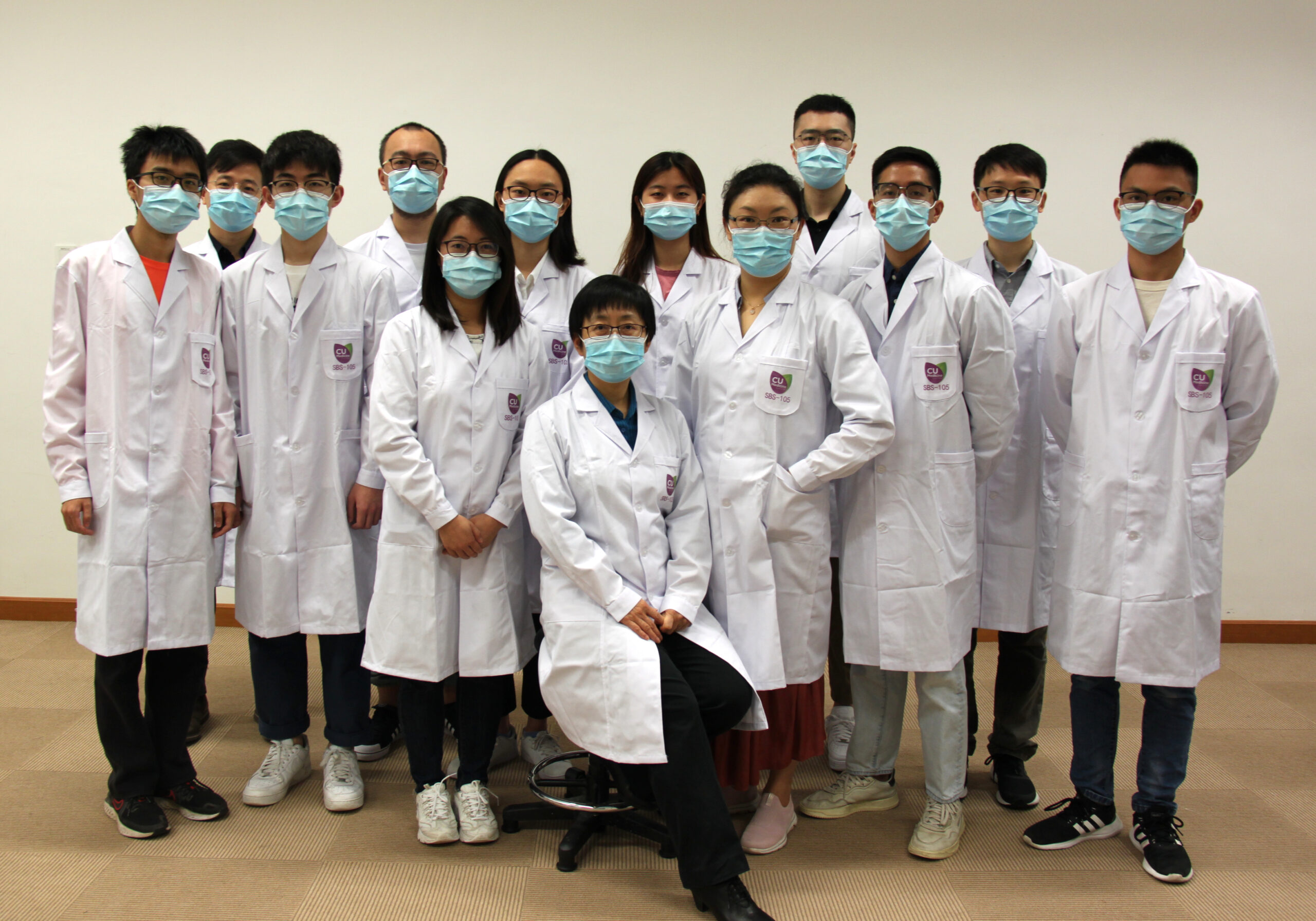
Principal Investigator:
Dr. FENG Bo
Research Team:
Dr. ZHANG Chenzi, Dr. XUE Kwan Yuen Katherine
RGP student:
Mr. DAI Liujiang (PhD, Yr 3), Mr. ZHANG Zhenjie (PhD, Yr 3), Mr. URIP Brian Anugerah (MPhil, Yr 2)
Alumni:
Dr TAN Chunlai, PhD (2018). Research Associate in School of Biomedical Sciences, The Chinese University of Hong Kong.
Dr ZHANG Xueyan, PhD (2018). Clinical Doctor in Wonmen’s Hospital, School of Medicine, Zhejiang University, Hang Zhou, China.
Dr HE Xiangjun, PhD (2016). Postdoctoral Fellow in School of Biomedical Sciences, The Chinese University of Hong Kong; Senior Scientist in Qihan Biotech Company, Hang Zhou, China.
Dr HU Jiabiao, PhD (2014). Postdoctoral Fellow in John Hopkins University, USA; Postdoctoral Fellow in Duke University, USA; Senior Scientist in Qihan Biotech Company, Hang Zhou, China.
Mr LEE Kai Chuen, MPhil (2013). Research Assistant in University of Hong Kong.
Final Year Project (2020)
Miss ZHANG Siqi, Yr 4 UG Student, Biomedical Sciences, The Chinese University of Hong Kong.
Mr ZHU Haoxing, Yr 4 UG Student, Life science, Nankai University.
Final Year Project (2019)
Miss WANG Jingyi, Yr 4 UG Student, Biomedical Sciences, The Chinese University of Hong Kong.
Mr LI Jiangchuan, Yr 4 UG Student, Life Sciences, Nankai University.
Final Year Project (2018)
Mr CHU Ho Ting David, Yr 4 UG Student, Life science, The Chinese University of Hong Kong.
Final Year Project (2016)
Miss YANG Junqing, Yr 4 UG Student, Life science, Nankai University of Hong Kong.
Final Year Project (2011)
Miss CHIU Wing Yin Sarah, Yr 3 UG Student, Human Biology, The Chinese University of Hong Kong.
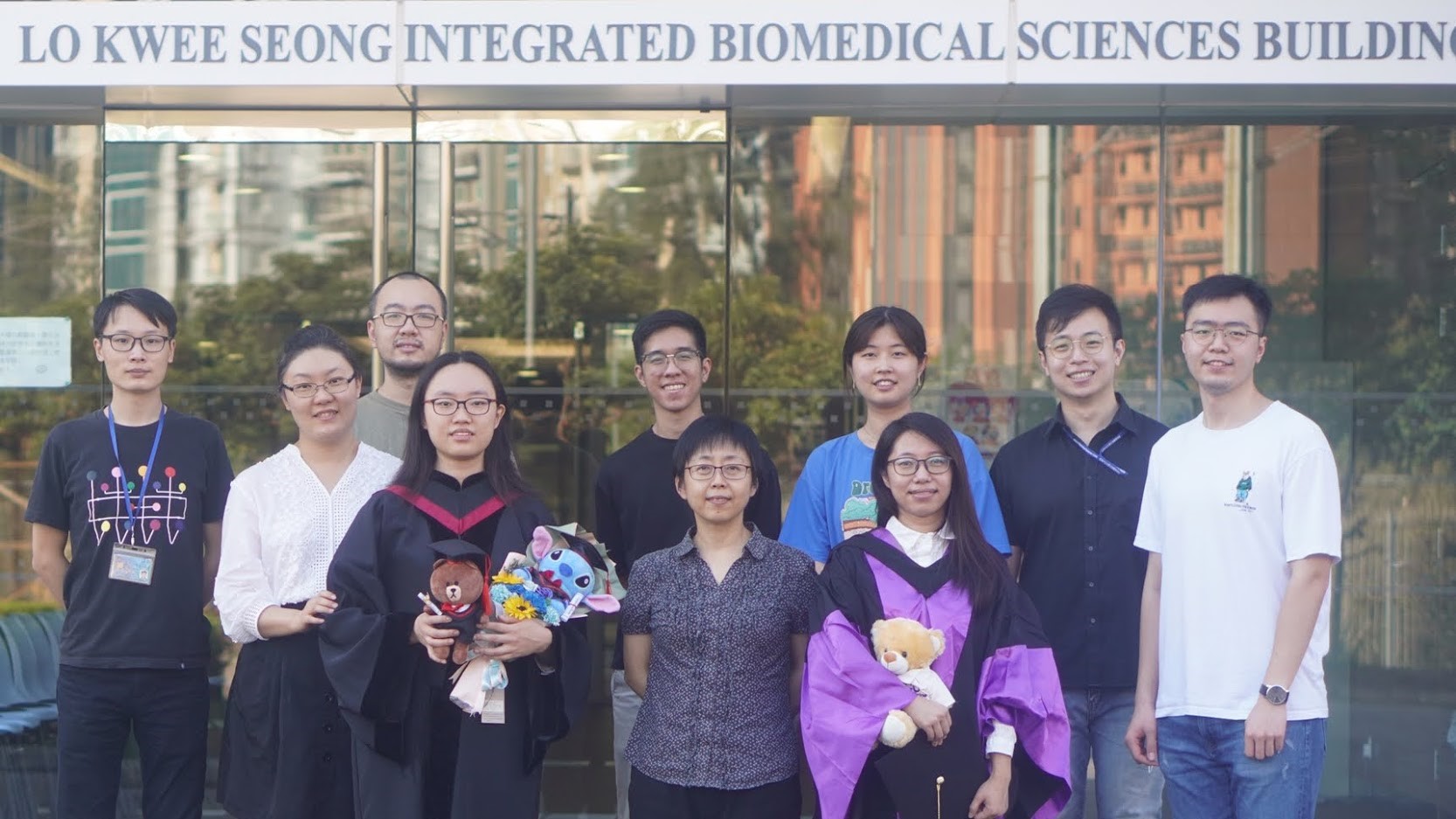
Our research focus on the molecular mechanism underlying the stem cell maintenance and differentiation as well as genome editing technology and platforms for gene and cell-based therapy. Research interests include the discovery of novel regulators for the maintenance and reinstatement of stem cell identity, as well as developing new technologies and molecular tools to promote stem cell research as well as gene and cell-based therapy to treat untreatable diseases.
Research topics include:
- Generation of universal Car-T cells for allogenic CAR-T therapy to treat leukaemia
- Engineering immune cells through genome editing for cancer therapy
- Therapeutic genome editing for innovative gene therapy to treat inherited diseases
- Molecular mechanism underlying the lineage specification from stem cells and cell fate control
Want a hands-on experience before commitments?
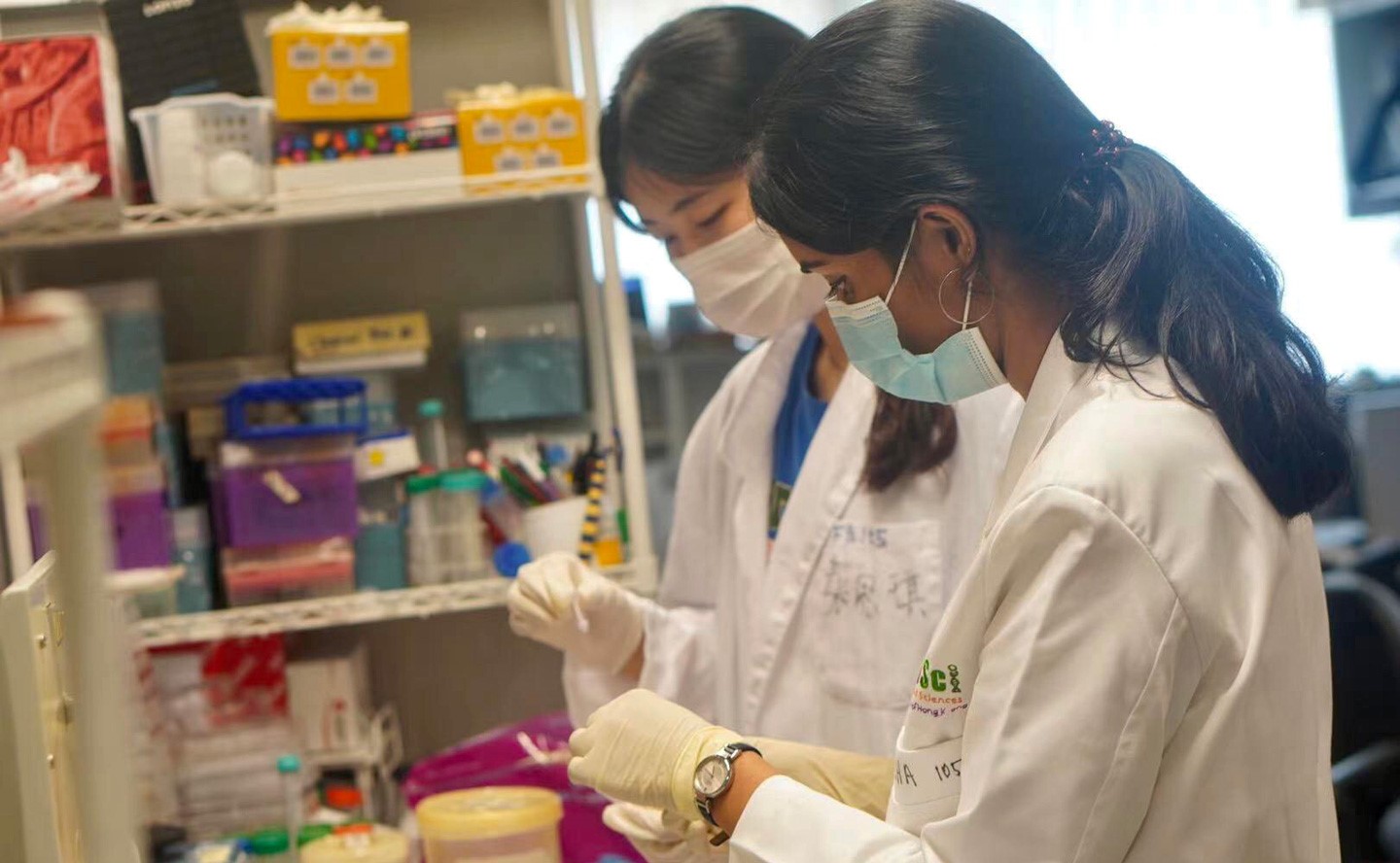
Miss SURESH Varsha (left) and Miss ZHANG Siqi (right) joined the Summer Undergraduate Biomedical Research Attachment of CUHK and worked at lab for eight weeks.
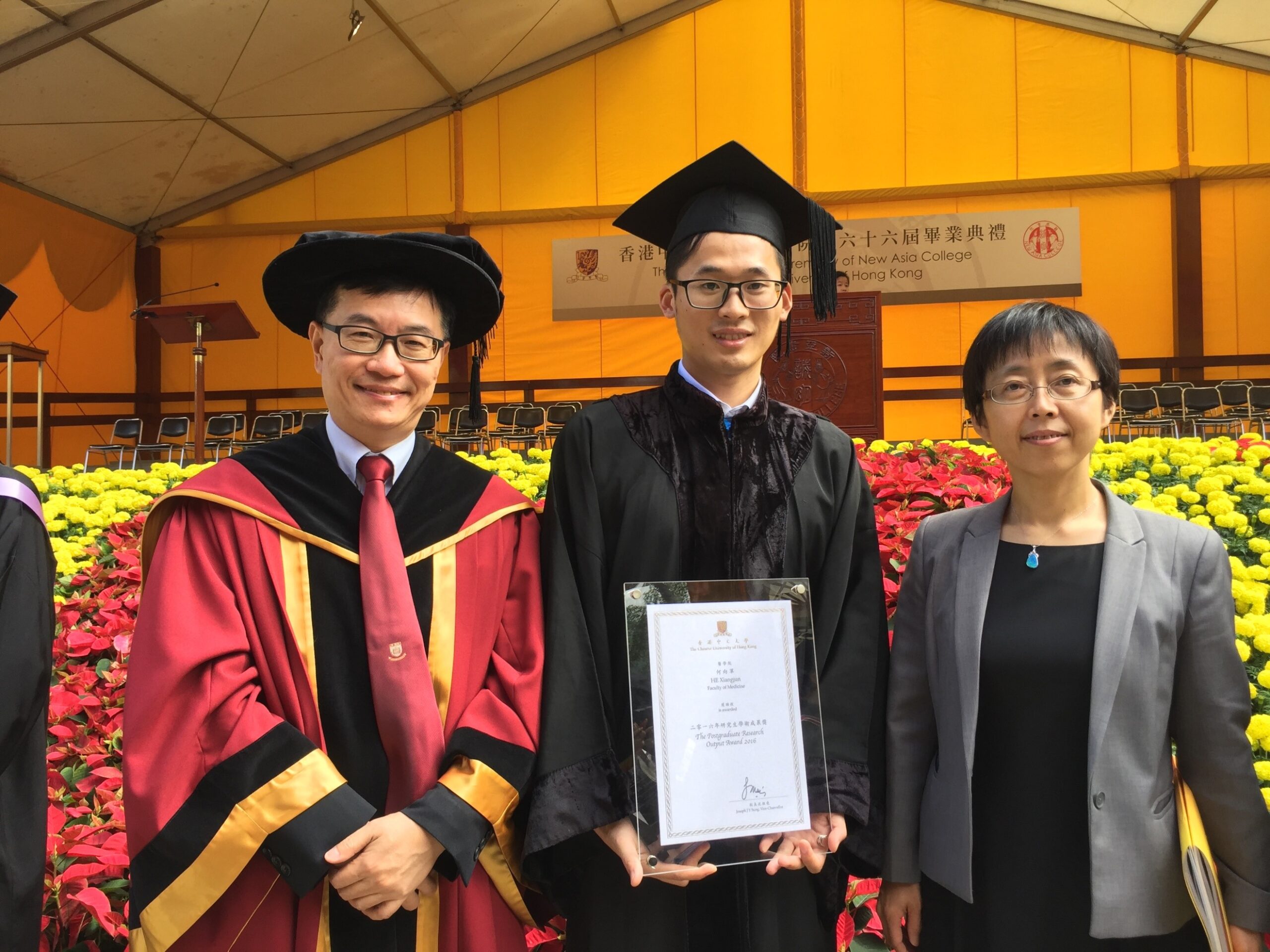
Congratulations to Dr HE Xiangjun, our PhD student from the Chinese University of Hong Kong for winning the Postgraduate Research Output Award 2016!
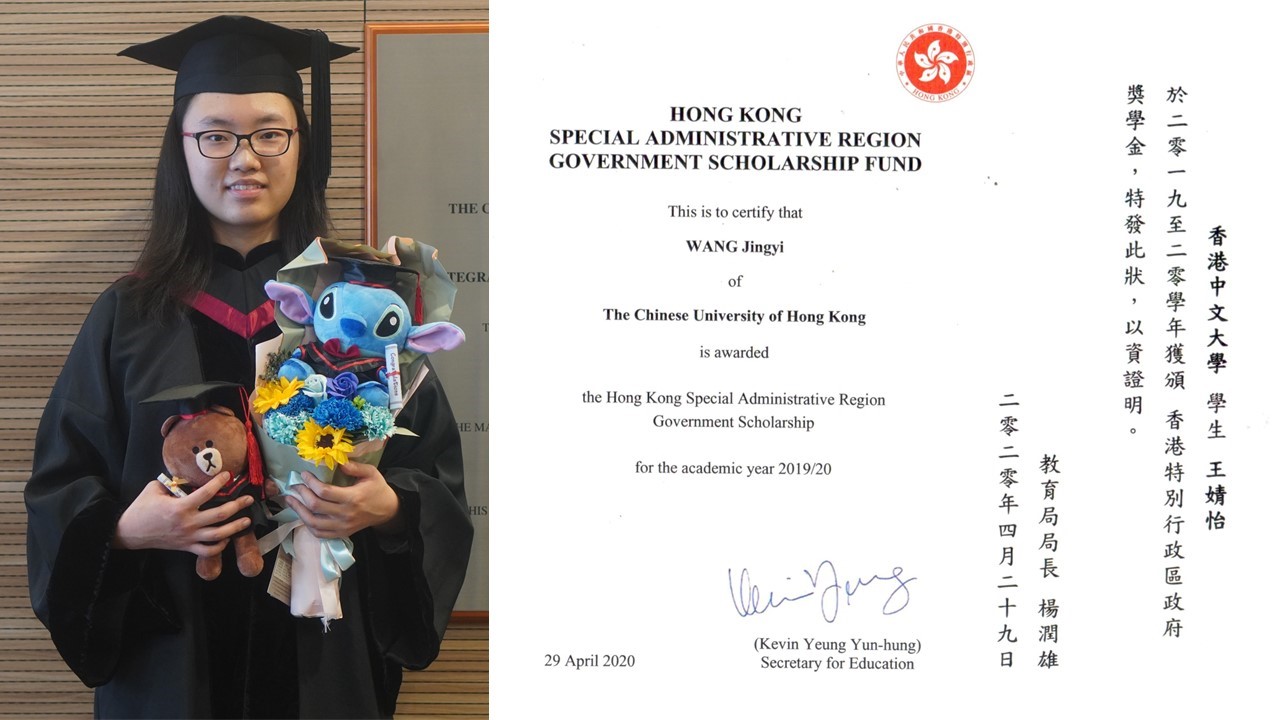
Congratulations to Miss Wang Jingyi, our Final Year Project student from the Chinese University of Hong Kong for winning the HKSAR Government Scholarship 2019/20!
Published paper
- He X, Urip BA, Zhang Z, Ngan CC, Feng B#. Evolving AAV-delivered therapeutics towards ultimate cures. J Mol Med 99(5), 593-617 (2021).
- Ren J, Liu Y, Wang S, Wang Y, Li W, Chen S, Cui D, Yang S, Li MY, Feng B, Lai PBS & Chen GG. The FKH domain in FOXP3 mRNA frequently contains mutations in hepatocellular carcinoma that influence the subcellular localization and functions of FOXP3. J Biol Chem 295, 5484-5495 (2020).
- Wong CW, Wang Y, Liu T, Li L, Cheung SKK, Or PM, Cheng AS, Choy KW, Burbach JPH, Feng B, Chang RCC & Chan AM. Autism-associated PTEN missense mutation leads to enhanced nuclear localization and neurite outgrowth in an induced pluripotent stem cell line. FEBS J 287(22), 4848-4861 (2020).
- Lu Y, Wong KY, Tan C, Ma J, Feng B# & Lin G. Establishment of a novel CYP3A4-transduced human hepatic sinusoidal endothelial cell model and its application in screening hepatotoxicity of pyrrolizidine alkaloids. J Environ Sci Health C Toxicol Carcinog 38, 169-185 (2020).
- Wang J, Zhang C, Feng B#. The rapidly advancing Class 2 CRISPR-Cas technologies: a customizable toolbox for molecular manipulations. J Cell Mol Med 24(6), 3256–3270 (2020).
- Sun J, Ma X, Chu HT, Feng B, Tuan RS, Jiang Y. Biomaterials and Advanced Biofabrication Techniques in hiPSCs Based Neuromyopathic Disease Modeling. Front Bioeng Biotechnol 7, 373 (2019).
- Suen HC, Qian Y, Liao J, Luk CS, Lee WT, Ng JKW, Chan TTH, Hou HW, Li I, Li K, Chan WY, Feng B, Gao L, Jiang X, Liu YH, Rudd JA, Hobbs R, Qi H, Ng TK, Mak HK, Leung KS, Lee TL. Transplantation of Retinal Ganglion Cells Derived from Male Germline Stem Cell as a Potential Treatment to Glaucoma. Stem Cells Dev 28(20), 1365-1375 (2019).
- Liao J, Ng SH, Luk AC, Suen HC, Qian Y, Lee AWT, Tu J, Fung JCL, Tang NLS, Feng B, Chan WY, Fouchet P, Hobbs RM & Lee TL. Revealing cellular and molecular transitions in neonatal germ cell differentiation using single cell RNA sequencing. Development 146(6), dev174953 (2019).
- Xiong L, Wu F, Wu Q, Xu L, Cheung OK, Kang W, Mok MT, Szeto LLM, Lun CY, Lung RW, Zhang J, Yu KH, Lee SD, Huang G, Wang CM, Liu J, Yu Z, Yu DY, Chou JL, Huang WH, Feng B, Cheung YS, Lai PB, Tan P, Wong N, Chan MW, Huang TH, Yip KY, Cheng AS, To KF. Aberrant enhancer hypomethylation contributes to hepatic carcinogenesis through global transcriptional reprogramming. Nat Commun 10(1), 335 (2019).
- Zhang C, He X, Kwok YK, Wang F, Xue Y, Zhao H, Suen KW, Wang CC, Ren J, Chen GG, Lai BS, Li J, Xia Y, Chan AM, Chan WY, Feng B#. Homology-independent multiallelic disruption via CRISPR/Cas9-based knock-in yields distinct functional outcomes in human cells. BMC Biol 16, 151 (2018).
- He X, Li YX, Feng B#. New Turns for High Efficiency Knock-In of Large DNA in Human Pluripotent Stem Cells. Stem Cells Int 2018, 9465028 (2018).
- Ma X, Wong AS, Tam HY, Tsui SY, Chung DL, Feng B#. In vivo genome editing thrives with diversified CRISPR technologies. Zool Res 39(2), 58-71 (2018).
- Li W, Deng Y, Feng B, Mak KK. Mst1/2 Kinases Modulate Glucose Uptake for Osteoblast Differentiation and Bone Formation. J Bone Miner Res 33(6), 1183-1195 (2018).
- Shen Z, Zhou R, Liu C, Wang Y, Zhan W, Shao Z, Liu J, Zhang F, Xu L, Zhou X, Qi L, Feng B, Ding Y, Zhao L. MicroRNA-105 is involved in TNF-α-related tumor microenvironment enhanced colorectal cancer progression. Cell Death Dis 8(12), 3213 (2017).
- Huang H, Xu C, Wang Y, Meng C, Liu W, Zhao Y, Huang XR, You W, Feng B, Zheng ZH, Huang Y, Lan HY, Qin J, Xia Y. Lethal (3) malignant brain tumor like 2 (L3MBTL2) protects against kidney injury by inhibiting the DNA damage-p53-apoptosis pathway in renal tubular cells. Kidney Int 93(4), 855-870 (2017).
- Wang Y, Qin J, Wang S, Zhang W, Duan J, Zhang J, Wang X, Yan F, Chang M, Liu X, Feng B, Liu J & Pei X. Conversion of Human Gastric Epithelial Cells to Multipotent Endodermal Progenitors using Defined Small Molecules. Cell Stem Cell 19(4), 449-461 (2016).
- Liu Z, Cheng TT, Shi Z, Lei Y, Wang C, Shi W, Chen X, Qi X, Cai D, Feng B, Deng Y, Chen Y & Zhao H. Efficient genome editing of genes involved in neural crest development using the CRISPR/Cas9 system in Xenopus embryos. Cell Biosci 6, 22 (2016).
- He X, Tan C, Wang F, Wang Y, Zhou R, Cui D, You W, Zhao H, Ren J, Feng B#. Knock-in of large reporter genes in human cells via CRISPR/Cas9-induced homology-dependent and independent DNA repair. Nucleic Acids Res 44(9), e85 (2016).
- Wang XW, He XJ, Lee KC, Huang C, Hu JB, Zhou R, Xiang XY, Feng B# & Lu ZQ#. MicroRNA-221 sponge therapy attenuates neointimal hyperplasia and improves blood flows in vein grafts. Int J Cardiol 208, 79-86 (2016).
- Zhao Y, Wang Y, Huang H, Liu W, Zhang J, Zhao H, Feng B, Leung PS, Xia Y. Interleukin (IL)-1β inhibits β-Klotho expression and FGF19 signalling in hepatocytes. Am J Physiol Endocrinol Metab 310(4), E289-300 (2016).
- Tu J, Ng SH, Shui Luk AC, Liao J, Jiang X, Feng B, Lun Mak KK, Rennert OM, Chan WY & Lee TL. MicroRNA-29b/Tet1 regulatory axis epigenetically modulates mesendoderm differentiation in mouse embryonic stem cells. Nucleic Acids Res 43(16), 7805-7822 (2015).
- Wang Y, Cheung AC, Guo JT, Feng B#. Genome-wide Massive Sequencing in Embryonic Stem Cell Biology: Recent Insights and Challenges. J Stem Cell Res Ther 5(8), 296 (2015).
- Liu S, Xu Y, Zhou Z, Feng B# & Huang H#. Progress and challenges in generating functional hematopoietic stem/progenitor cells from human pluripotent stem cells. Cytotherapy 17(4), 344-58 (2015).
- Ma H, Ow JR, Tan BC, Goh Z, Feng B, Loh YH, Fedele M & Li H & Wu Q. The dosage of Patz1 modulates reprogramming process. Sci Rep 4, 7519 (2014).
- Hu J, Lei Y, Wong WK, Liu S, Lee KC, He X, You W, Zhou R, Guo JT, Chen X, Peng X, Sun H, Huang H, Zhao H, Feng B#. Direct activation of human and mouse Oct4 genes using engineered TALE and Cas9 transcription factors. Nucleic Acids Res 42(7), 4375-4390 (2014).
- Ma H, Ng HM, Teh X, Li H, Lee YH, Chong YM, Loh YH, Collins JJ, Feng B, Yang H, Wu Q. Zfp322a Regulates mouse ES cell pluripotency and enhances reprogramming efficiency. PLoS Genet 10(2), e1004038 (2014).
- Lee KC, Wong WK, Feng B#. Decoding the pluripotency network: the emergence of new transcription factors. Biomedicines 1(1), 49-78 (2013).
- Lu X, Goke J, Sachs F, Jacques PE, Liang H, Feng B, Bourque G, Bubulya PA & Ng HH. SON connects the splicing-regulatory network with pluripotency in human embryonic stem cells. Nat Cell Biol 15(10):1141-1152 (2013).
- Tsang WH, Wang B, Wong WK, Shi S, Chen X, He X, Gu S, Hu J, Wang C, Liu PC, Lu G, Chen X, Zhao H, Poon WS, Chan WY#, Feng B#. LIF-dependent primitive neural stem cells derived from mouse ES cells represent a reversible stage of neural commitment. Stem Cell Res 11(3), 1091-1102 (2013).
- Do DV, Ueda J, Messerschmidt DM, Lorthongpanich C, Zhou Y, Feng B, Guo G, Lin PJ, Hossain MZ, Zhang W, Moh A, Wu Q, Robson P, Ng HH, Poellinger L, Knowles BB, Solter D & Fu XY. A genetic and developmental pathway from STAT3 to the OCT4-NANOG circuit is essential for maintenance of ICM lineages in vivo. Genes Dev 27(12), 1378-1390 (2013).
- Chan YS, Göke J, Lu X, Venkatesan N, Feng B, Su IH, Ng HH. PRC2 Dependent Repressive role of PRDM14 in Human Embryonic Stem Cells and iPSC Reprogramming. Stem Cells 31(4), 682-692 (2013).
- Xu Y, Liu L, Zhang L, Fu S, Hu Y, Wang Y, Fu H, Wu K, Xiao H, Liu S, Yu X, Zheng W, Feng B, Huang H. Efficient commitment to functional CD34+ progenitor cells from human bone marrow mesenchymal stem cell-derived induced pluripotent stem cells. PLoS One 7(4), e34321 (2012).
- Chia NY*, Chan YS*, Feng B*, Lu X, Orlov YL, Moreau D, Kumer P, Yang L, Jiang J, Lau MS, Huss M, Soh BS, Kraus P, Li P, Lufkin T, Lim B, Clarke ND, Bard F, Ng HH. A genome-wide RNAi screen reveals determinants of human ES cell identity. Nature 468(7321), 316-320 (2010).
- Im CN, Kang NY, Ha HH, Bi X, Lee JJ, Park SJ, Lee SY, Vendrell M, Kim YK, Lee JS, Li J, Ahn YH, Feng B, Ng HH, Yun SW, Chang YT. A fluorescent rosamine compound selectively stains pluripotent stem cells. Angew Chem Int Ed Engl 49(41), 7497-7500 (2010).
- Heng JC*, Feng B*, Han J, Jiang J, Kraus P, Ng JH, Orlov YL, Huss M, Yang L, Lufkin T, Lim B, Ng HH. The nuclear receptor Nr5a2 can replace Oct4 in the reprogramming of murine somatic cells to pluripotent cells. Cell Stem Cell 6(2), 167-174 (2010).
- Feng B, Ng JH, Heng JC, Ng HH. Molecules that promote or enhance reprogramming of somatic cells to induced pluripotent stem cells. Cell Stem Cell 4(4), 301-312 (2009).
- Feng B, Jiang J, et al., Lufkin T, Ng HH. Reprogramming of fibroblasts into induced pluripotent stem cells with orphan nuclear receptor Esrrb. Nat Cell Biol 11(2):197-203 (2009).
- Feng B, Bulchand S, Yaksi E, Friedrich RW and Jesuthasan S. The recombination activation gene 1 (Rag1) is expressed in a subset of zebrafish olfactory neurons but is not essential for axon targeting or amino acid detection. BMC Neurosci 6, 46 (2005).
- Feng B, Schwarz H, Jesuthasan S. Furrow-specific endocytosis during cytokinesis of zebrafish blastomeres. Exp Cell Res 279(1), 14-20 (2002).
